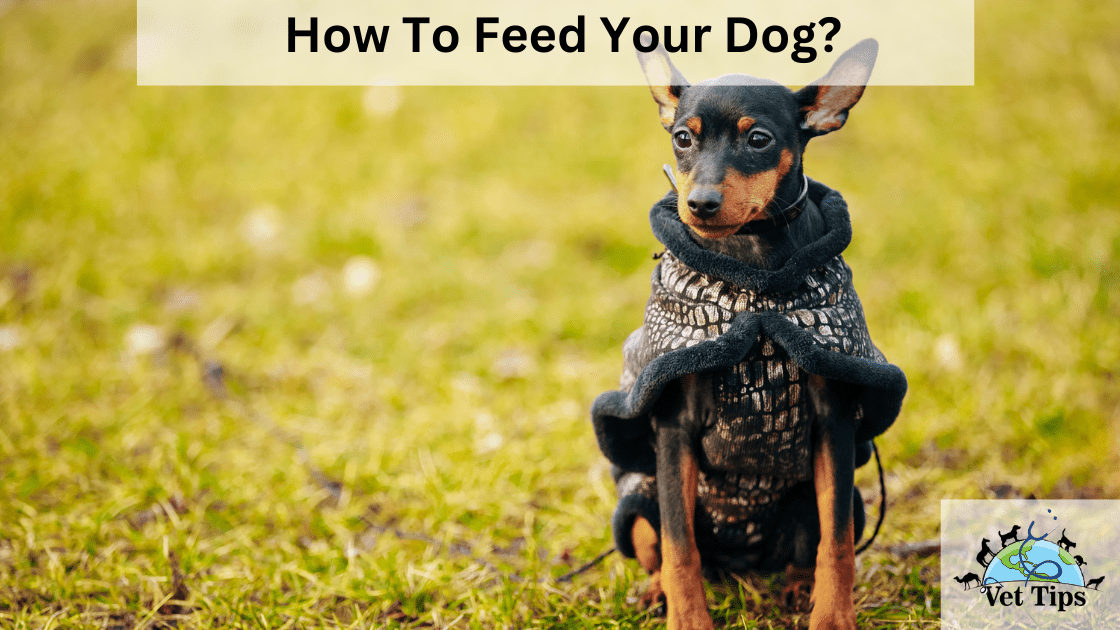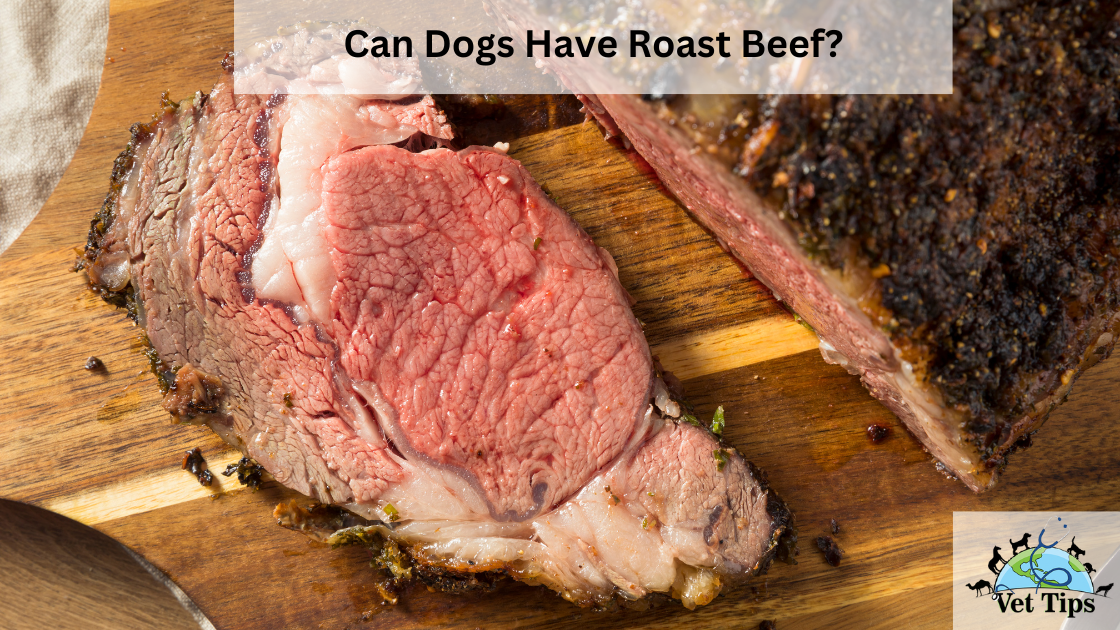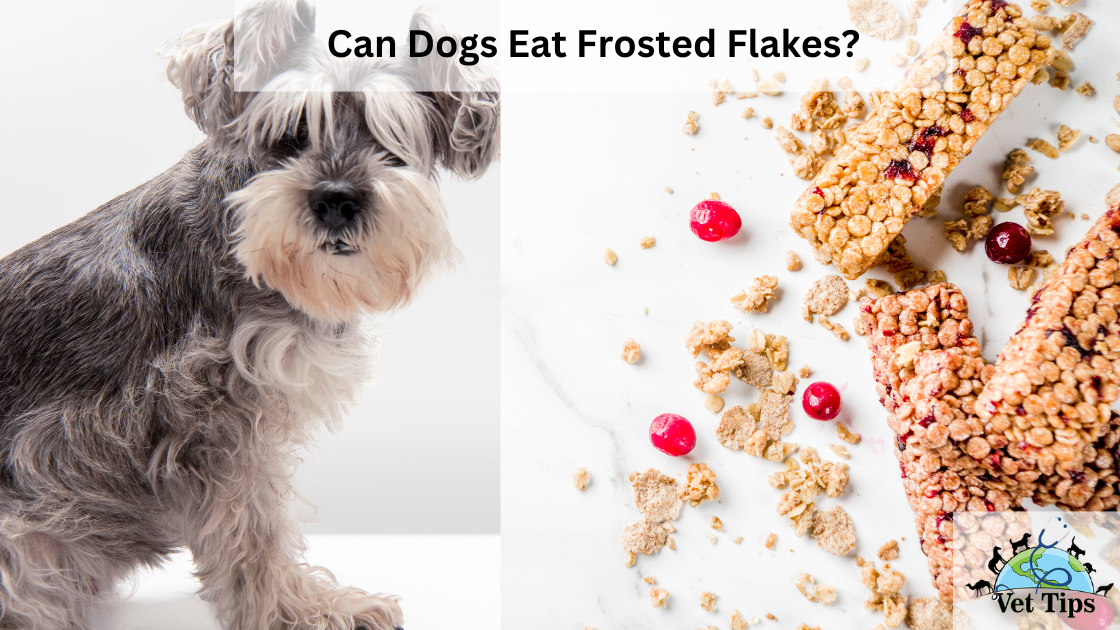Proper nutrition is vital for your dog’s overall health and well-being. Feeding your dog a balanced and appropriate diet is key to ensuring they receive the necessary nutrients for optimal growth and maintenance. In this article, we will provide you with essential guidelines on how to feed your dog effectively.
Diet and nutrition are significant elements to keeping your dog a healthy part of the family for years to come. Though there’s no hard-and-fast rule regarding how often a dog should eat, twice a day is typically a decent place to start. However, more essential than feeding frequency is meal portion size. Portion size may vary dependent on breed, age, and medical problem, and agreeing on the appropriate amount can be challenging. According to the MSD Veterinary Manual feeding schedule for dogs is given below in the table.
Feeding Schedule for Dogs
| Age | Number of Daily Meals | Type of Food |
| 6 to 12 weeks | 4 | Puppy diet |
| 3 to 6 months | 3 | Puppy diet |
| 6 to 12 months (up to 2 years in the largest breeds) | 2 | Puppy diet |
| Adult | 1 or 2 | Adult diet |
Are dogs carnivores, omnivore or vegetarian?
Domesticated dogs have evolved from being carnivores to becoming omnivores. Still, their wild counterparts have evolved to be opportunistic feeders, consuming both meat and plant-based diets regularly.
There is a biological and evolutionary explanation why dogs can consume both types of food:
Carnivores have small intestines because the meat is easier to digest and breaks down more quickly than vegetables and fruits. We discover that herbivores have longer intestines because plants take longer to break down and digest, resulting in a longer gut. Dogs have a distinct advantage over their wild counterparts in that their intestines are longer than those of a carnivore but shorter than those of a herbivore. As a result, they can consume both meat and plant-based diets. As a result, they are omnivorous.
Dogs’ wild cousins, such as hyenas, wolves, and jackals, have been observed to consume grain, particularly roasted grain scavenged from garbage dumps in metropolitan areas. They may also ingest the grain that is located in the intestines of their victim with no difficulty. On the other hand, domestic dogs have been discovered to have three genes that allow them to digest starch and glucose — making them more adaptive to grain and other plant-based diets, as opposed to wild dogs.
One word of caution, though, before we start converting our pets into vegetarians. The digestive system of carnivores – such as dogs and cats – does not ferment plant foods in the same way it does in herbivores. As a result, feeding them a plant-based diet will need feeding them more feed and a greater variety of feed to get the same nutritional benefit they would have gained from a meat-based diet in the first place. Because of this fermentation difficulty, some dogs may experience digestive issues while eating a plant-only diet.
Wild dogs eat when they find food. That is, when they are hungry, they will consume whatever is the most convenient for them. Their diet includes scavenging for and eating animal or vegetable debris and hunting for live prey. They also consume roadkilled animals, dead cattle, and food leftovers from compost heaps and garbage dumps. Wild dogs feed primarily on tiny animals such as rabbits, possums, rats, wallabies, and bandicoots, among other things.
When hunting in groups, they will take larger animals such as kangaroos and goats, but not smaller animals. The young of bigger animals, such as cattle and horses, are also at risk of being attacked by predators. Their selection of primary prey species is dictated by what is abundant and simple to catch in the area.
Canines often hunt in the early morning and early evening, when they are able to identify individual prey animals by sight, approach them stealthily, and then chase them down and kill them. The presence of a fleeing animal will inspire assault.
Dog Food Types
Commercial dog meals are available in three primary forms: canned, dry, and semi-moist. Canned dog foods are the most common. The classifications utilized are based on the processing technique and water content than on the classified food’s component composition or nutritional profile. The dietary components of complete and balanced commercial dog meals are designed to give appropriate amounts of each necessary nutrient while avoiding an unacceptable excess of any nutrient.
Dry Food:
Among the pet food categories available in the United States, dry food is the most popular choice. Dried foods are typically composed of 90 percent dry matter and 10 percent water in most cases. A whopping 95 percent of dry dog meals are extruded, which means they are manufactured by mixing and heating components (grains, animal protein, by-products, oils and fats, minerals, and vitamins), then pushing the mixture through a die.
Temperatures of up to 150°C (303°F) are used in the cooking and extrusion processes to transform starches into a more readily digested form, eliminate toxins and inhibit compounds, and flash sterilize the finished product. To improve palatability, the meal is enrobed with fat and digest (a substance generated from the controlled breakdown of animal tissues, such as chicken digest).
Dry food has several advantages over canned or soft-moist food, including a reduced cost and the elimination of the need to refrigerate any leftovers. In addition, certain forms of dry food may give a helpful message to the teeth and gums, which may assist in reducing the risk of periodontal disease (although unless specifically formulated to deter it, remain mainly ineffective in dogs for this purpose).
Canned Food:
Canned dog foods include 68–78 percent water and 22–32 percent dry content, whereas fresh dog foods have 68–78 percent water. Several components in canned pet meals are also found in dry-extruded foods but not always at the same inclusion levels as in dry-extruded foods. Can foods generally contain more significant amounts of fresh or frozen meat, poultry, or fish products and animal by-products due to the high moisture level of the food they have?
Many canned pet meals contain textured proteins produced from grains, such as wheat or soy, which are beneficial to your pet’s health. These materials serve as meat analogs because they have a physical structure comparable to meat and a high nutritional value. It is possible to improve the overall nutritional profile of the final product by combining meat with some of the textured proteins. This can help to reduce costs while also improving the overall nutritional profile of the final product.
To provide the desired nutritional content, canning pet food begins with preparing meat or meat analogs and fat components, combined with water and dry ingredients, such as essential vitamins and minerals. A fine slurry is produced by mixing and grinding the mixture, dependent on the product’s characteristics.
In order to ensure complete eradication of foodborne germs, when the cans have been filled, they are sealed and retorted (a heat and pressure cooking process that also sterilizes the contents). Long shelf life in a sturdy container and excellent palatability are benefits of canned food consumption. Canned food, on the other hand, is more costly than dry food.
- Soft-moist Food:
Dry matter accounts for 60–75 percent of soft-moist dog meals, with water accounting for 25–40 percent of the total. In addition to not requiring refrigeration, they are maintained by employing humectants, which bind water, making it inaccessible for bacteria and mold growth while extending their shelf life. Simple sugars (often sucrose), sorbitol, propylene glycol, and salts are examples of such substances.
Many soft-moist foods are acidified with phosphoric, malic, or hydrochloric acid to prevent spoiling and extend shelf life. The convenience of soft-moist meals and their high energy digestibility and palatability are all advantages. Soft-moist food, on the other hand, is more costly than dry food.
- Home-cooked Diets:
Dogs can be effectively kept on home-cooked meals that have been appropriately prepared. The use of fresh, high-quality ingredients selected by the proprietor is one of the many advantages of home-cooked diets. Preparation time, inconsistent quality control and diet consistency, increased expense, and the difficulty in designing and preparing a nutritionally complete and balanced diet are all disadvantages of this method of eating.
A nutritionally complete and balanced diet with appropriate nutrient density in a small volume of food that is acceptable to dogs is tough to prepare. Several B vitamins, copper, and iodine are deficient in many home-cooked meals, resulting in dishes high in protein and caloric density but low in calcium and phosphorus. Most feline diet plans that are available online contain incredibly high amounts of ash or minerals because of the extensive amount of synthetic nutritional supplementation necessary.
It is recommended that owners who prefer to feed a home-cooked food adopt a recipe that has been developed by an experienced veterinary nutritionist (vs. found on the Internet). It is also essential to remember that no home-cooked diets have been subjected to the same level of testing and study as commercial pet foods to develop comprehensive and balanced diets.
- Raw meat-based diets:
Raw meat diets have gotten a lot of attention in recent years, and for a good reason. Because of the controversy surrounding this feeding technique and an absence of reliable data, and a scarcity of high-quality research, it is difficult for veterinarians to offer educated recommendations to pet owners.
There are two primary forms of raw meat-based diets: those cooked at home and those purchased from a store. Fresh, frozen, pasteurized, or freeze-dried commercial raw meat-based diets are the most widely used preparation methods. Also incorporated in this category is a range of raw, dry, or freeze-dried pet treats made from animal by-products. Among the many other feeding regimens available at home are BARF, the Ultimate Diet, and the Volhard Diet, to name a few.
Should I feed my Pup raw or cooked food?
Cooked and raw food are both acceptable to dogs. Leftovers such as chicken, beef, fish (boneless), and pig are excellent protein sources. Furthermore, grains such as green grams, maize flour, and rice are all popular and readily available sources of nutrition. If you feed anything and your dog has an allergic reaction, go back and eliminate that item from his diet.
When purchasing commercial feed, be sure you get it from a reputable business that has taken the time to ensure that the diet is balanced and that any additives used do not create dog allergies.
Avoid meals prepared from inadequately dried grain, grain with visible mold on it, or waste grain. Unsuccessfully dried grain, particularly in warm and humid climates, can be contaminated with high amounts of mycotoxins such as aflatoxins. Aflatoxins are responsible for the deaths of thousands of canines each year all over the world. It is essential to consume fiber to maintain a healthy gut.
Is it essential to provide vitamin and mineral supplements?
It is critical to supplement your dog’s diet with the proper vitamins and minerals, just as it is with human nutrition, to promote healthy growth.
Many critical fatty acids, vitamins such as A, D, E, and B complex vitamins and micronutrients, may be found in meat-based meals.
Taurine, thiamine, pyridoxine, and cyanocobalamin are vitamins essential for the proper functioning of the neurological system. A vitamin A deficit results in night blindness and skin diseases, whereas a vitamin D deficiency results in the weakening of the bones.
Minerals such as magnesium, zinc, calcium, manganese, iron, copper, sodium, and potassium must be included in the diet to be effective. Zinc, for example, is vital in keeping skin healthy, potassium is essential in maintaining muscle health, and calcium and phosphorus are critical in maintaining bone and muscle health.
How do you make dog food at home?
Making your own dog food is both cheaper and more nutritious than purchasing commercial feed. Aside from being free of artificial chemicals and additives that might cause allergies and other problems in your pet, homemade food is also a healthier alternative to commercial feed. You may also make food for your pet that he or she will love rather than purchasing a generic meal from the store. It is, however, a time-consuming process.
So, what kinds of ingredients can you consider?
Diets prepared at home are essential in the dog’s nutrition. Many commercial diets contain food products that contain artificial coloring agents and flavoring compounds, which are detrimental to the dog’s body and should be avoided at all costs. In contrast to mass-produced commercial goods, homemade food items offer freshness during the preparation process.
From a health standpoint, it is possible that the preservatives used in commercial food products are not the most appropriate for dogs. Even in the event of renal illness in dogs, homemade meals with ground beef, pieces of bread, calcium carbonate, boiled eggs, and other ingredients can be prepared. The goal is to produce the feed items with a limited protein supply to meet dietary requirements. This should be done with homemade foods that have been specially prepared for dogs suffering from renal illness.
What about water?
Water is given in appropriate quantities to aid in the correct metabolism of patients with digestive disorders who also have renal failure. The dog may be suffering from allergy symptoms such as extreme itching, which may not be alleviated by the many drugs that have been tried over a period of time on him. Dog food that has been prepared at home instead of commercially available food may be effective in treating these types of instances. Home-produced food products are frequently designed to utilize freezing techniques to eliminate bacteria or add grape seed extracts to ensure that the homemade food items have appropriate antioxidants.
In addition, food-grade vinegar is frequently added to the meat pieces that have been cooked freshly. All of these may be boosted with vitamin supplements, which are readily accessible in fruit essences, fish oil, and other forms of fish. For the dog to become more active after consuming such food items, cranberry juice, bananas, fish, and meat must be quality.
How should I feed my dog as it grows?
Yes. This is correct. Dogs require various diets at different stages of their lives. For example, when it comes to puppy food, milk is the essential ingredient, but an adult dog may require meat or chicken in addition to the boiled egg and milk.
As with any other species, the feeding regimen for dogs differs in reality based on the animal’s age. When compared to adult dogs, puppies require higher intakes of protein, fat, and carbs.
Furthermore, compared to an adult dog, pups require more frequent feeding schedules throughout the day. Movement-based nutritional needs are more significant in puppies than adults because they are more active than their adult counterparts. Elder dogs require a restricted protein intake, but the protein must be easily digested and absorbed by the body to be effective.
They should have access to an abundance of water as part of their eating regimen. Feeding an elderly dog an excessive amount of protein may eventually result in an overburdening of the renal structures, and the dog may end up harming the filters in the kidney. This is especially true when the immune system of these dogs has been weakened as a result of a variety of causes.
In case of old dogs
Similarly, the old dogs require less food simply because their activities are severely restricted, and as a result, they must expend a disproportionate amount of energy to maintain their health. Female dogs in the early stages of pregnancy should not be fed to fill their stomachs since doing so may cause pain to the animal.
Those who are expecting a child or who are nursing a baby, on the other hand, require specialized food products that provide a well-balanced kind of nutrition with enough fortification of vitamins and minerals. The nursing animal with puppies must be provided with sufficient quantities of calcium so that there is no calcium deficit and the bones of the puppies are robust and free of bending as a result of the nursing process.
How much should I feed my dog?
Many people will respond in a variety of ways depending on their personal experience with their pets. However, it is necessary to emphasize the scientific facts linked to the feeding elements in the case of dogs during the feeding activities that are carried out regularly for dogs. Generally speaking, pups should not be separated from their mothers before they are eight weeks old.
Orphaned pups, on the other hand, may exist from time to time. The amount of food provided to the puppies is usually calculated as a percentage of their body weight, around 5% of their total body weight. The amount of food eaten by the dog, on the other hand, fluctuates depending on the size of the dog. However, a general rule of thumb for feeding a puppy is to keep providing him until he shows apparent fullness in his tummy to a modest degree.
Suppose you continue to feed the dog without paying attention to the look of the animal’s stomach. In that case, the puppy may encounter various digestive disturbances, including diarrhea, which may become sick.
More about dog feeding (in terms of quantity)
This may result in a great deal of inconvenience for both the owner and the puppy. When compared to adult dogs, pups require more frequent feedings with smaller portions of food. However, as the child grows older, the amount of food consumed may be raised to a certain level, but the frequency with which it is consumed is frequently reduced. A dog’s daily caloric intake will be between two and four percent of its body weight on a raw diet.
Keep a careful eye on the dog’s eating habits and the overall condition of the animal. If the dog gets obese, lower the amount of food given to him, and if the dog becomes thin, increase the number of feeding items given to him. As previously stated, puppies and teenage dogs consume far more calories than adult dogs. Due to the diminished activity of the dog, the elderly dog consumes less food than the mature canine. However, limiting the quantity of protein fed to the elderly dogs while feeding them their food is essential.
How often should I feed my dog?
This is a generally asked question by many dog enthusiasts and dog owners, and it is an essential one. A puppy under the age of six weeks must be given milk five to seven times a day if it is still in the first six weeks of its life. If the puppy is hungry in general, it will make some noise to indicate that it wants to eat. When the puppy is seven to eight weeks old, however, the frequency of feedings may be decreased. By the time the canine companion reaches the age of four weeks, it may be able to begin eating solid food on its own.
For this reason, mix the solid food with water in most cases and feed your doggy once or twice a day in the beginning. If the dog develops diarrhea, then stop feeding him immediately.
In most cases, it is due to trial and error, but there are some fundamental stages in feeding that you should follow, so keep an eye out for these. After the baby has reached the age of eight weeks, the feeding frequency can be reduced to two to three times each day.
More about dog feeding frequency
On the other hand, if the dog appears to be hungry and needs food, then offer food more often than the predicted numbers. This varies depending on the breed of canine being considered. However, in this age range of dogs, it is best not to feed them too frequently. During the first seven months of the puppy’s life, the puppy will be teething.
For this reason, restrict feeding to two times daily, but make sure that the dogs of this age group are receiving adequate nutrition to avoid deficiency-related illnesses during this period of time. Between the ages of eight months and one year, you should experiment with commercial puppy food.
It is possible, however, that the adult diet will be introduced gradually after the first year. When the dog reaches the age of an elder dog, however, you should limit the frequency with which it is fed since the movements of such senior dogs are much reduced for a variety of reasons. However, depending on the animal’s desire to be fed, the pregnant animal may be fed for an additional period of time while the quantity of food is restricted. Still, the quality of the food is not compromised.
Tell us in the comments, how you like our article “How To Feed Your Dog?”
For similar posts like this, click here.
For the source file click here.









One thought on “How To Feed Your Dog?”